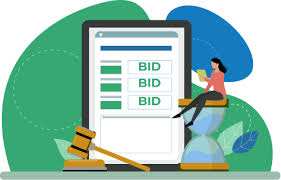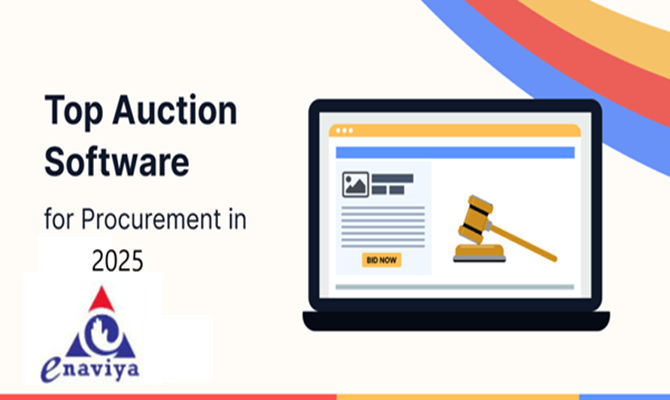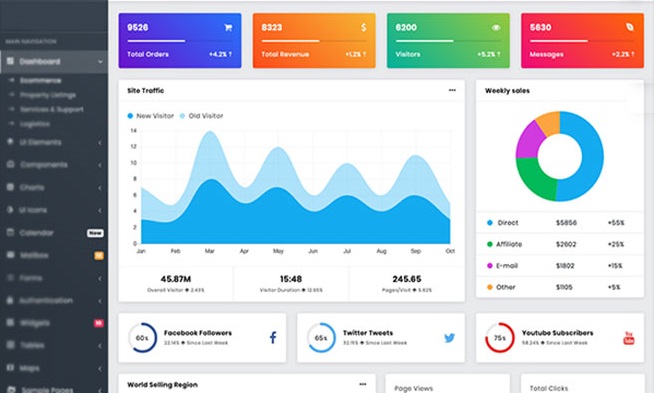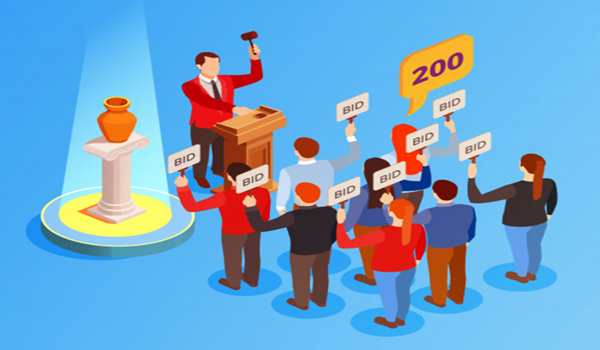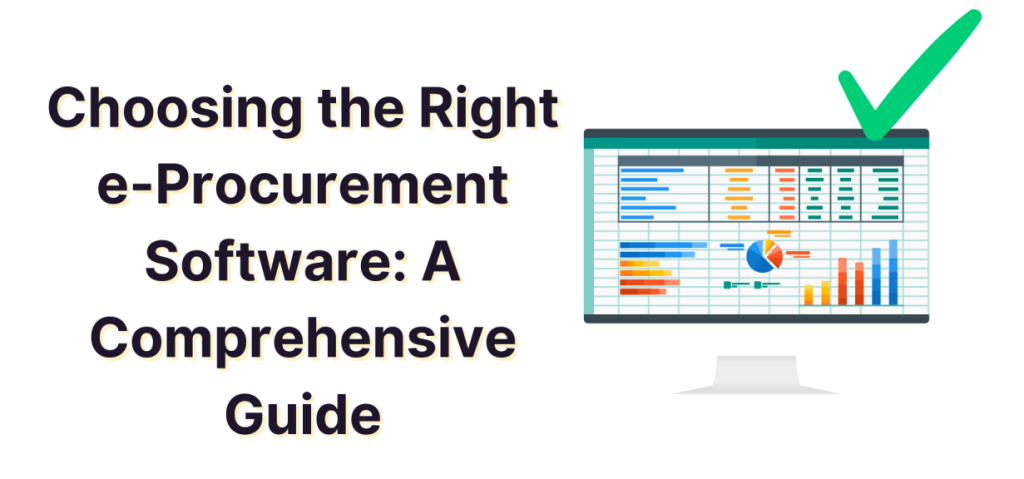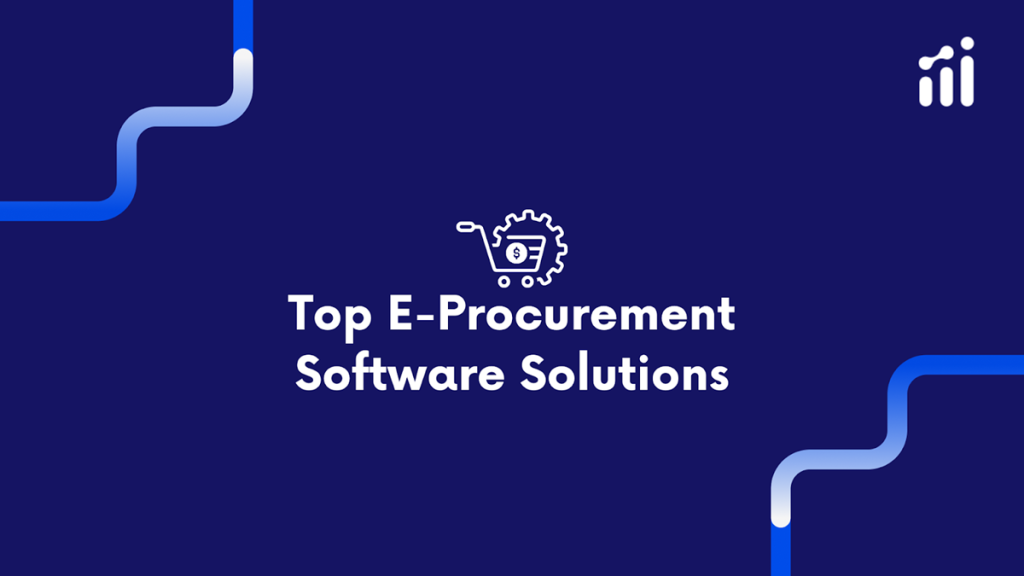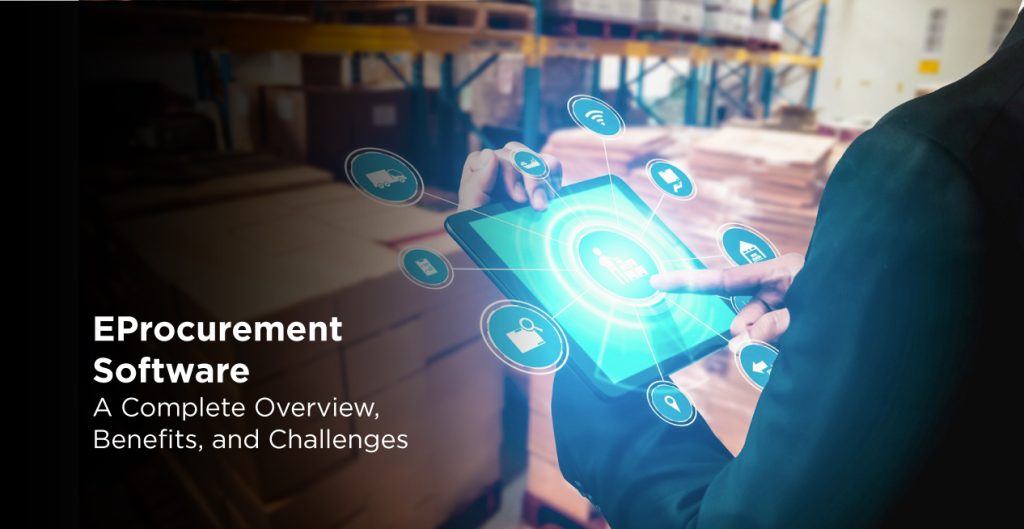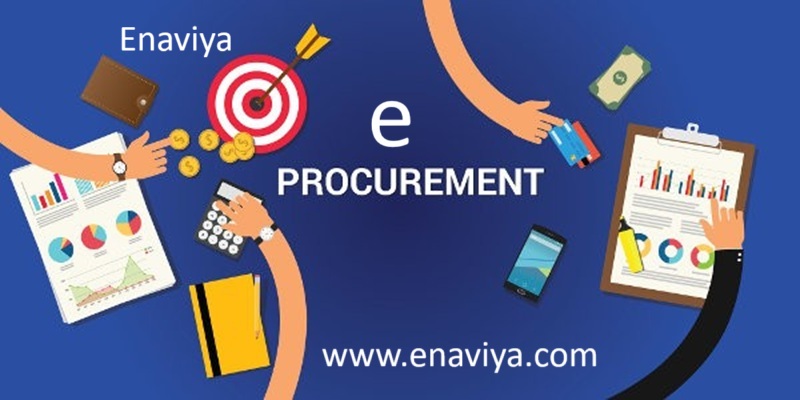E-procurement has altered the way businesses perform procurement, supplier relationships, and cost management. Organizations that use eAuction Management Software, Bid Management Systems, and others in electronic procurements can manage efficiency, low costs, and transparency. Implementation is only perfect if done thoughtfully and rightly.
This post elaborates on the 10 major success factors for the successful and smooth implementation of an e-procurement system.
1. Clear Business Goals and Strategy
Steps for Defining Goals:
Before implementation, a well-defined strategy should be in place by the businesses, aligned with their objectives. Without clear goals, the implementation process may be disorganized, which will, in turn, lead to inefficiencies and wasted resources. A structured plan will ensure that the e-procurement system delivers measurable benefits and supports the organization’s overall procurement needs.
• Identify Inefficiencies – Businesses should analyze their current procurement process to detect issues such as supplier delays, high procurement costs, or lack of transparency. Understanding these inefficiencies helps in setting realistic objectives.
• Specific Target Setting – The definition of specific and measurable targets includes cost reduction, a faster procurement cycle, and improvements in the supplier relationship. For example, a target can be stated as saving 15% in one year in the purchase cost of a company by electronic bidding.
• Define KPIs – To measure performance, an organization will track progress based on supplier response time, time to approve purchase orders, and cost savings through the system’s delivery of the expected benefits.
For instance, a manufacturer that faces different pricing from suppliers can implement Online Auction Management Software in order to get competitive bidding; thereby reducing its procurement cost while having control over the suppliers involved.
2. Selection of Correct E-Procurement Software
The process for selecting the proper e-procurement software will be very essential in smoothing up the procurement process and making it efficient. As all solutions cannot include all features, a business must look for the requirement of that solution and then the industry standard, with this budget requirement as well.
Important Criteria to Choose a Software:
• Scalability – The business should ensure that the software will scale to their changing needs. When the procurements increase, the system should support more suppliers’ transactions and information not compromising its performance.
• Usability – A user-friendly interface should be available for the procurement teams and the suppliers. A complicated system tends to produce errors, causes training problems, and is reluctant to adopt.
• Integration – The software to be selected should easily integrate with the ERP software, accounting tools, and inventory management systems. This ensures a smooth flow of data and prevents duplication of effort.
For example, a large retail chain that had several suppliers would likely use Real-Time Auction Management Software in order to monitor live and competing bids from suppliers and, hence, compare the vendors’ prices before making a procurement decision. The right software can, therefore help businesses improve efficiency, supplier negotiation, and cost savings significantly.
3. Engage Stakeholders and Procurement Teams Early
An e-procurement system affects the finance, operations, and IT departments. Without early engagement, employees resist change because it may cause inefficiency and delay. All the key stakeholders must be involved from the initial stages so that the expectations of such users are met and catered to by the newly procured system for a smooth adoption process.
Steps to Involve Stakeholders Effectively:
• Workshops and Training – The actual working of the system would be facilitated through holding workshops with employees. Educating teams on how the system streamlines procurement, saves costs, and proves efficient in supplier management would make them accept it.
• Monthly Input from Procurement Teams – Interaction with these professionals would help understand what’s wrong with the present scenario. Their input ensures that the system is user-friendly and meets operational needs.
• Ongoing Support: Continuous support and training can eliminate frustration and build confidence among the members of an organization. Support desks, user guides, or scheduled visits can facilitate usability.
Example: A hospital that would be implementing the eAuction Management Software for Buyers will probably involve the doctors, medical staff, and procurement teams to make sure that whoever suppliers they settle on must conform to their health requirements.
4. Supplier Readiness and Adoption
The success of an e-procurement system is not merely determined by the adoption of business but also by how effectively it is used by suppliers. Any difficulty in adoption by suppliers tends to reduce the efficiency of procurements, creates delays, and confusion, and results in less competitive biddings. Thus, to reap optimal benefits from E-Auction Management Software, a firm needs to prepare its suppliers to use this platform efficiently.
Prepare the Suppliers for E-Procurement
• The suppliers may not be aware of the digital process of procurement. Step-by-step training sessions about using the eAuction Management System help understand how to place a bid, quote, and manage orders.
• Supplier onboarding has technical support problems or system problems. Dedicated technical support ensures the suppliers can address problems quickly to avoid any inconvenience in procurement activities.
• Implement User-Friendly Software – A complicated system may discourage the participation of suppliers. Implementing an eAuction Management Software for Suppliers that is user-friendly will ensure effortless adaptation and promote active participation in the bidding procedures.
For example, an automobile company with Bid Management Software should train suppliers on how best to make competitive bids to ensure risk-free procurement and boost supplier involvement.
5. Integration with Existing Systems
An efficiently integrated e-procurement system allows for seamless processes as it connects different business processes. In case of no integration, the purchasing team will undergo inefficiency because data gets duplicated, information is manually handled resulting in an error, and the approval process takes longer.
Key Integrations towards Success in E-Procurement
• ERP Systems – Integration with Enterprise Resource Planning (ERP) software allows real-time tracking of procurement activities, budgeting, and financial forecasting. Procurement teams can monitor spending and ensure compliance with financial policies.
• Inventory Management Systems – Connecting the eAuction Management System with inventory tracking prevents over-purchasing and stock shortages. Businesses can automate purchase requests based on real-time stock levels, reducing waste and ensuring supply chain efficiency.
• Supplier Portals: Supplier portals would ensure the ease of communication between trading partners, the sharing of documents, and also the management of bids. Suppliers can raise quotes, track order status, and receive procurement updates.
For example, if an eAuction Management System is adopted by a food processing firm, it has to integrate with warehouse software, such that the level of stock in the warehouse will be checked before anything is ordered. It would ensure the firm bought what it needed, avoiding waste and ensuring optimization of procurement cost.
6. Data Security and Compliance
Huge volumes of sensitive financial and supplier information will be managed by the e-procurement systems. When appropriate security measures are not provided, there can be data compromised from a cyber threat standpoint, fraud, and unauthorized access. Strong data security and adherence to regulations will keep financial loss away by retaining the trust of the stakeholders.
E-Procurement Major Security Measures
• Data Encryption: Sensitive procurement data will be encrypted such that financial transactions, supplier bids, and purchase details cannot be accessed by hackers. This prevents misuse of sensitive information.
• Role-Based Access Control – RBAC limits procurement data access only to authorized personnel. For example, finance teams may have access to budgeting information, and suppliers should only be able to access relevant bid details. This minimizes the occurrence of internal fraud.
• Compliance audits are systematic reviews that help ensure business compliance with procurement regulations and standards. This ensures transparency, justifiable choice of suppliers, and ethical conduct of business.
For example, a government agency employing Bid Management Software should adhere to strict transparency regulations in order to ensure equal competition. Enforcing good security controls can help businesses ensure data integrity and regulatory compliance. It can help businesses instill confidence among suppliers and stakeholders during the procurement process.
7. Leverage Real-Time Data and Advanced Analytics
One of the many important benefits that come from implementing an e-procurement system is real-time data and advanced analytics. E-procurement can immediately provide a representation of spending, performance by supplier, and cost trends, unlike traditional procurement processes, which are based on manual tracking and outdated reports.
How to Take Advantage of Real-Time Data:
• Track Supplier Performance – Companies can monitor the delivery times of suppliers, quality standards, and responsiveness. If a supplier consistently delays shipments, procurement teams can take corrective action, such as negotiating new terms or finding alternative suppliers.
• Analyze Cost Variations – The prices of goods and services differ according to demand, market conditions, and supplier pricing strategies. Companies can compare different supplier prices and make cost-effective purchasing decisions using real-time analytics.
• Discover Procurement Bottlenecks – Data analytics are used by firms to determine what is not efficient in their procurement workflows, including delayed approvals and unnecessary spending. This enables streamlining and efficient resource utilization.
An airline firm can, for example, observe fluctuations in fuel prices within the market with Real-Time Auction Management Software. Using trend data will have the grounds for negotiations over the contracts, with this possibly offering a cost benefit to the airlines while guaranteeing stability.
8. Employee Training and Change Management
Installation of an e-procurement system is more than the placement of new software but instead presents a drastic transformation of the role that the employee assumes regarding procurement processes. It will take an adjustment for this long-used-for traditional staff people to embrace and get used to this new thing in doing things about procurement, with low probable adoption without being trained, potential creep back with inefficiency at times of being resistant to any form of such change, for which effective training and successful change management plays a crucial part.
Best Practices for Effective Training of Employee
• Hands-on Workshops-Involve people in interactive workshops so that they learn the practical usage of the eAuction Management System. It will give them an idea about all the relevant features and functionality, hence increasing confidence.
• User Guides and Video Tutorials-Provide access to written manuals and video tutorials for reference by step-by-step instructional materials for use when employees need help. Ensure that these resources are easily accessible to the employees.
• Dedicated Support Teams -Provide employees with a team of experts who will engage them in answering all their queries, troubleshooting problems, and maintaining support at all times during the transition phase.
For example, a bank using eAuction Management Software for Buyers needs to educate the train procurement officers on how to assess the offers by suppliers in the best possible manner. This way, the system will be applied appropriately, thus enhancing the quality of procurement decisions and enhancing cost savings.
9. Ongoing Monitoring and Process Improvement
Continuous improvement is then necessary once an e-procurement system has been established. Needs change both in procurement and the market, and new technologies may emerge. The business may not be able to strike the opportunity to upgrade its procurement strategies if it does not continually evaluate itself in ways of maximizing cost savings that could be achieved.
Steps to Maintain the Continuity of Improvements
• Establish Key Performance Indicators-
The organizations must delineate those measurable KPIs that could indicate their effectiveness in dealing with the procurement process. The measurable criteria are as follows:
• Supplier response time– It is the time by which the suppliers will submit a bid or answer any question arising in the process.
Procurement cycle duration: The time between the submission of a purchase request and payment.
• Cost savings– It calculates the decline in procurement expenses over time.
• Gather Feedback from Procurement Teams and Suppliers– Continuous feedback helps identify bottlenecks and areas for improvement. Procurement teams and suppliers should be encouraged to share their experiences with the eAuction Management System to refine the process.
• Update Software Features as Business Needs Evolve: As procurement strategies change, the business must update its Real-Time Auction Management System with new features to improve efficiency.
For example, a logistics company would master its bidding process through the data-driven insights that the Real-Time Auction Management System provides in optimizing transportation costs and improving negotiations with suppliers.
10. Cost Management and ROI Measurement
Monitoring business has to do with ROI concerning the investment in an e-procurement system so that businesses can ascertain value delivery from the system. When the calculation for ROI from cost cuts, process improvements, and efficiency gains is done, the business will find a justification for its investment and apply prudence toward future improvement.
ROI Factors to track
• Low Human Error: Paperwork and manual data entry surround traditional procurement, making the mistakes expensive and made. There are no errors in automated procurement systems; rather, rework is reduced and transactions are correct.
• Suppliers’ Low Price: A business can negotiate the cost of a purchase with its suppliers through eAuction Management Software for Buyers by having competitive bidding.
• Increased Process Efficiency: Automated approvals enhance a streamlined workflow, reducing procurement cycle times and thus delays. Supplier relations also improve.
For example, a retail business can measure ROI by comparing supplier costs before and after implementing eAuction Management Software, helping them track savings and improve purchasing decisions.
Conclusion
Implementing an e-procurement system is not merely about software selection; it is a strategic process that engages stakeholders, suppliers, and employees. Based on the following 10 success factors, organizations will be able to:
• Supplier negotiations: Enhanced with the use of Auction Management Software.
• Bid evaluations: Automated by using Bid Management Systems.
• Transparency in procurements: Improved through the use of Real-Time Auction Management System.
Continuous use of digitization in a company’s purchase ensures long-run efficiency, reduced cost, and repute gained for being an economical and technologically advanced marketplace.

